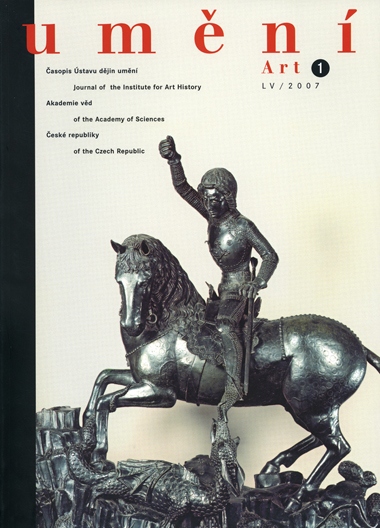Antonín Kalous
Declaratio brevis Corone immaculate virginis: A Source for Late Medieval Popular Piety
A set of four incunabula is deposited in the Research Library of Olomouc. One of them contains a handwritten page with the text Declaratio brevis Corone immaculate Virginis. In terms of its content, this text conforms to general religious trends in the 15th century in Central Europe. The late Middle Ages were characterised by a heightened spirituality and an emphasis on traditional objects of popular piety-first and foremost the Virgin Mary and the life of Christ. To a considerable degree, these trends were also supported by the mendicant orders. Marian piety and its expression in the rosary were spread through the influence of the Dominicans and the Minorites (and later the Franciscan-Observants). The Dominican rosary, which included 150 'Hail Marys', was the most widespread, but other versions were also popular. Among the Franciscans of the 15th century, the most popular version was the one that was allegedly promoted by St Bernardino of Siena and St Giovanni of Capistrano. In this version, the number of angelic salutations referred to the lifespan of the Virgin Mary on earth: this rosary included 63 (or 70, 72, 73) 'Hail Marys'. After the end of the Hussite revolution, the Franciscans also introduced the latest European trends to the Czech lands, in particular Moravia and Silesia. In these lands, the Utraquist influence was less pronounced than in Bohemia. Moravia, Silesia and Lusatia extricated themselves from international isolation much sooner than did Bohemia. European influences increased on account of the Catholic cities, as well as the conquest of Matthias Corvinus and the joining of these lands to his Hungarian Kingdom. In 1468, Corvinus visited Olomouc and on that occasion the Church of the Immaculate Conception of the Virgin Mary at the Franciscan monastery was consecrated. The wall painting from 1500 in this church depicts the Coronation of the Virgin Mary, along with two rows of depictions on the theme of the seven joys of the Virgin Mary and the seven effusions of the blood of Christ. A similar painting has been preserved in the Franciscan church in Wrocław, which includes a further five rows with other depictions. Nonetheless, these paintings are typologically similar. The fact that the paintings were widespread recalls the general trends of piety at the end of the Middle Ages, although one can find specific points in common between the Franciscans in Olomouc and in Wrocław (the Bishop and Franciscan Jan Filipec). The text, which is published as an addendum, describes a painting, which corresponds in detail to the depiction in Olomouc (except that in the painting there are 73 beads, whereas in the text there is mention of the 63 years of the Virgin Mary). This text explains how the painting should be perceived and interpreted from the perspective of popular piety. It demonstrates that such paintings were clearly even more widespread and in use, as one can see from the attached list of indulgences offered to the faithful who prayed the prayer of 'the crown of the Virgin Mary'.
Full-text in the Digital Library of the Czech Academy of Sciences:
https://kramerius.lib.cas.cz/uuid/uuid:4ff30e55-5fe4-40a5-a1bc-f1a5996876a3
< back

